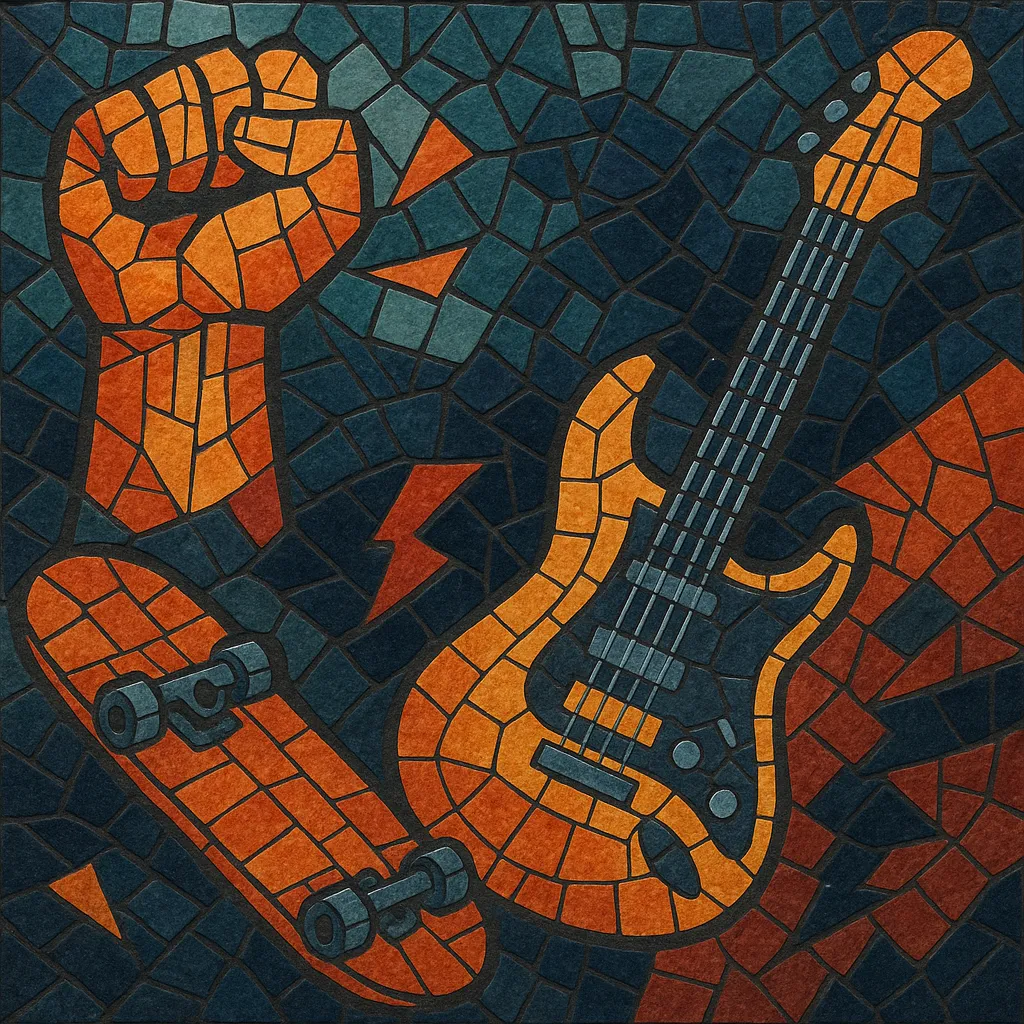Easycore is a fusion of pop punk’s catchy melodies with the weight and rhythmic punch of metalcore and hardcore punk. It is often summarized as “pop punk with breakdowns.”
Songs typically feature bright, hook-heavy choruses; upbeat, skate-punk tempos; and dynamic shifts into syncopated, half‑time breakdowns with palm‑muted chugs. Vocals are predominantly clean and energetic, sometimes reinforced by gang shouts and the occasional screamed accent. Lyrics lean toward youthful themes—friendship, perseverance, relationships, and cathartic optimism—delivered with an anthemic, crowd-ready feel.
Easycore emerged in the United States during the mid–late 2000s as pop punk bands began incorporating the heaviness and rhythmic vocabulary of metalcore and hardcore punk. Groups like A Day to Remember, Four Year Strong, Set Your Goals, and New Found Glory fused major‑key, melodic songwriting with double‑time drums and half‑time breakdowns. The term “easycore” circulated informally online and among fans to label this upbeat yet heavy blend.
Through relentless touring, energetic live shows, and hook-forward records, the style coalesced into recognizable tropes: tight verse–chorus writing, big sing‑along refrains, and breakdowns that mirrored contemporary metalcore (syncopated chugs, low tunings, and cymbal-heavy impacts). International adopters—including France’s Chunk! No, Captain Chunk! and UK acts like Me Vs Hero—helped globalize the sound.
By the mid‑2010s, easycore’s hallmarks filtered into broader pop punk and adjacent scenes. While the label is sometimes used retroactively or tongue‑in‑cheek, its influence persists in modern pop punk’s heavier rhythm guitars, gang vocals, and stage‑ready breakdowns. The style also helped bridge fanbases between upbeat punk and heavier post‑hardcore/metalcore, widening the genre’s festival and playlist ecosystems.
Use two overdriven guitars, bass, drums, and clean lead vocals (plus gang shouts). Rhythm guitars often sit in Drop D or Drop C to enable tight, percussive chugs for breakdowns while keeping choruses bright and chord‑friendly.
Target 160–200 BPM for verses and choruses, leaning on driving pop punk beats (eighth‑note downstrokes, fast hi‑hat work). Contrast with half‑time breakdowns (70–100 BPM feel) using syncopated kick patterns and open‑string chugs. Common form: Intro → Verse → Pre‑Chorus → Chorus → Verse → Chorus → Breakdown/Bridge → Final Chorus (often with key lift or added harmonies).
Write major‑key, diatonic progressions (I–V–vi–IV variations are common) with melodic, octave‑lead hooks. Keep vocal melodies catchy and stepwise; double with guitar harmonies for impact. For breakdowns, pivot to pedal‑tone riffs, parallel fifths, and rhythmic displacement (e.g., 3‑over‑4 or off‑beat accents) for tension and release.
Prioritize energetic, clean leads with stacked harmonies and call‑and‑response gang vocals. Lyrics emphasize camaraderie, resilience, and cathartic closure; keep lines concise and chantable to translate live.
Drums: tight kicks and cracking snares; use fast fills into choruses and gated‑reverb or sample layering for breakdown emphasis. Bass: lock to the kick in verses and breakdowns, then outline chord roots with occasional passing tones in choruses to preserve clarity beneath dense guitars.
Aim for polished, high‑energy production: quad‑tracked rhythms, edited tightness, bright vocal presence, and sidechain‑aware low‑end. Use automation to lift pre‑choruses and add ear‑candy (gang shouts, claps) on downbeats. Preserve transient punch so breakdowns hit without smearing the chorus sheen.


